Your 7-Day Meal Plan for Prediabetes Just Got a Major Science Upgrade (And It’s Not What You Think)

I learned something about prediabetes meal planning that honestly surprised me – and it’s not another diet telling you what you can’t eat. After digging into the research (and trying way too many approaches that didn’t work), I realized I’d been focusing on the wrong things entirely. This isn’t about cutting carbs or obsessing over calories anymore. It’s about working with your body’s natural rhythms instead of fighting against them. I’m sharing what I’ve learned about creating a 7-day meal plan for prediabetes that actually helps reverse it instead of just managing it.
What really got my attention is that only 12% of adults are living without metabolic health disease, making prediabetes way more common than most of us realize. Even more concerning, 95% of people with prediabetes are unaware they have it, often missing the subtle signs that can show up years before blood tests catch anything.
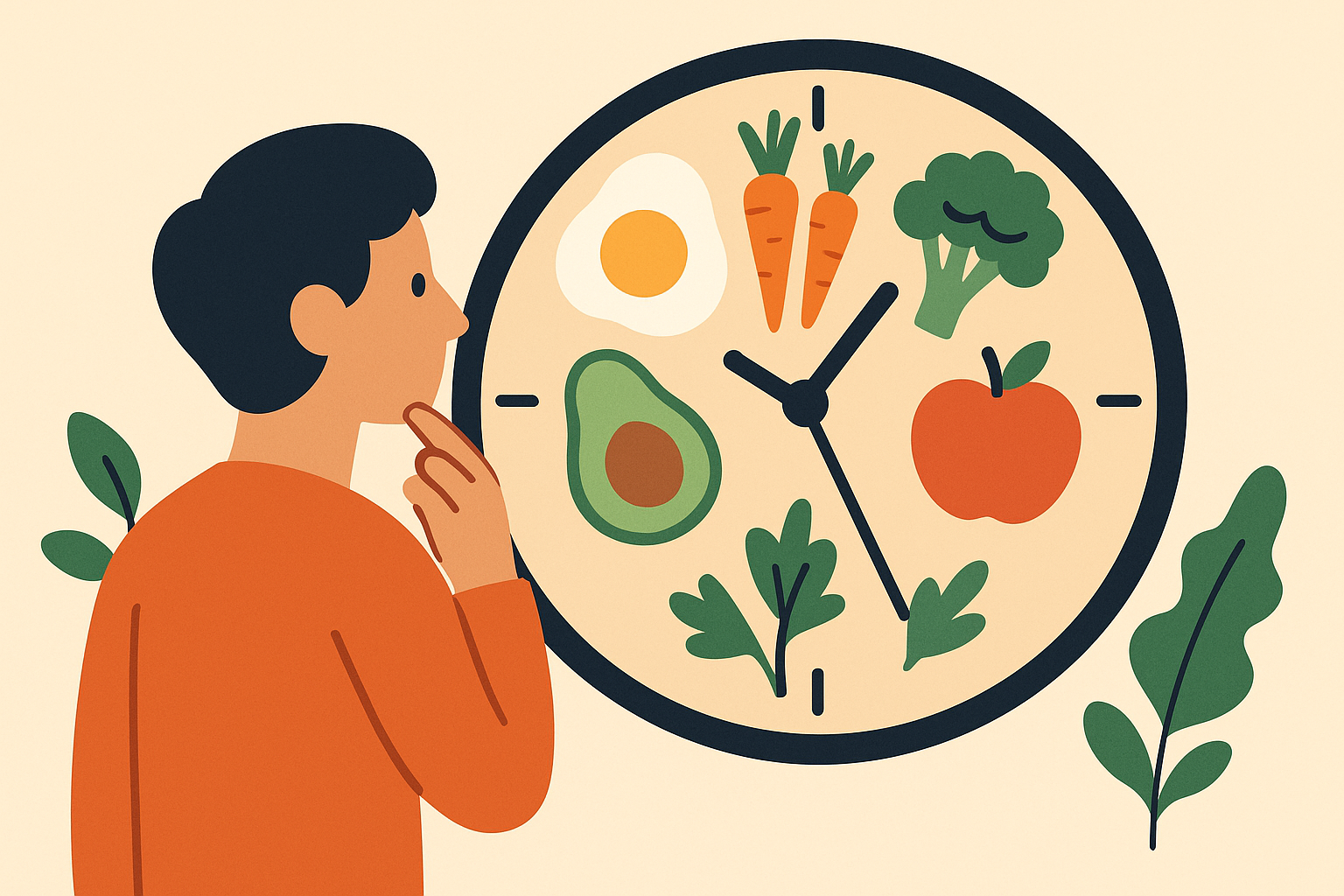
Table of Contents
- Why Your Body Clock Controls Your Blood Sugar More Than Your Diet
- The Micronutrient Revolution That Changes Everything
- How Your Gut Bacteria Secretly Run Your Glucose Levels
- The Food Combining Tricks That Cut Blood Sugar Spikes by 40%
- Final Thoughts
TL;DR
- Your body has its own schedule for processing food – eating the same thing at different times creates totally different blood sugar responses
- Certain minerals like chromium and vanadium work like natural insulin helpers, but most meal plans completely ignore them
- Your gut bacteria actually control your glucose levels by producing compounds that help or hurt your metabolism
- The order you eat foods can reduce glucose spikes by up to 40%, no matter what you’re actually eating
- When you eat protein in the morning and stop eating early in the evening matters more than counting calories all day
Why Your Body Clock Controls Your Blood Sugar More Than Your Diet
Most prediabetes meal plans treat your body like a simple math problem – calories in, calories out. But I learned that your metabolism actually runs on its own internal schedule that completely changes how you process the exact same foods throughout the day. Your body handles insulin best in the morning and worst at night, which means that piece of toast hits your system totally differently at 7 AM versus 7 PM.
Understanding this timing thing isn’t just interesting – it’s the key to creating a meal plan that works with your body instead of against it. When I started looking into an effective intermittent fasting approach, understanding these natural rhythms became even more important for managing prediabetes successfully.
The typical diabetic diet approach that ignores timing is missing half the picture. I used to think food was food, no matter when I ate it. That mindset kept me stuck dealing with afternoon energy crashes and evening cravings that sabotaged everything I was trying to do.
| Time of Day | How Your Body Handles Food | Best Food Choices | What to Avoid |
|---|---|---|---|
| 6-10 AM | Peak efficiency | Complex carbs, protein | Skipping breakfast |
| 10 AM-2 PM | Still pretty good | Balanced meals | Refined sugars |
| 2-6 PM | Getting worse | Protein-focused | Large portions |
| 6-10 PM | Really struggling | Light, low-carb | Heavy meals |
| 10 PM+ | Basically shut down | Water only | Any food intake |
The Morning Window Most People Completely Waste
Your body gives you about six hours each morning when your metabolism is ready to handle carbs like a champ. During this time, your cells are practically begging for glucose, and insulin works at its best. But here’s what blew my mind – most people either skip breakfast entirely or eat something that completely wastes this advantage.
The research shows that what you do in those first few hours after waking sets the tone for your entire day’s blood sugar control. I was definitely one of those people grabbing coffee and a muffin on the way to work, then wondering why I felt terrible by 10 AM.

Working With Your Body’s Natural Morning Blood Sugar Rise
Every morning, your body naturally releases hormones that raise your blood sugar – it’s called the dawn phenomenon, and it happens whether you eat or not. I used to think this meant I should skip breakfast, but that’s exactly backwards.
The trick is eating within 30 minutes of waking up, focusing on protein-rich foods that actually help stabilize this natural rise instead of making it worse. Think eggs with vegetables, not cereal or toast. Learning how to prepare nutrient-dense oatmeal can give you a perfect foundation for morning meals that keep blood sugar steady all day.
Instead of reaching for a bagel and coffee (which sent my blood sugar to 180+ mg/dL), I started having scrambled eggs with spinach and a slice of avocado. This combo typically keeps my post-meal glucose under 140 mg/dL while giving me energy that actually lasts.
The 25-Gram Protein Rule That Changed My Whole Day
I discovered that getting 25-30 grams of complete protein in my first meal does something amazing – it literally sets up my metabolism for the entire day. This isn’t about building muscle (though that’s nice too). The protein triggers signals that improve glucose control for hours afterward.
Greek yogurt with nuts, a three-egg omelet, or even a protein smoothie can hit this target easily. The key is doing this consistently, not just when I remember or have time for a proper breakfast. I’ll be honest – some mornings I still grab something quick, but I notice the difference in how I feel all day when I skip this step.
Morning Protein Checklist:
- ☐ Aim for 25-30 grams of complete protein
- ☐ Eat within 30 minutes of waking
- ☐ Include at least one vegetable
- ☐ Skip the refined carbs
- ☐ Drink 16-20 oz water
The Weird Sunlight Thing That Actually Works
This one made me feel pretty silly at first. Eating your morning meal while getting 10-15 minutes of natural light actually strengthens the signals that regulate glucose metabolism. Your body uses light to sync all its internal clocks, including the ones that control insulin.
I started eating breakfast by a sunny window or on my porch, and honestly, the difference in my energy levels was noticeable within days. Even on cloudy mornings, getting outside while eating helps. Yes, my neighbors probably think I’m weird, but my blood sugar doesn’t care about their opinions.
Evening Metabolism: When Your Body Works Against You
Everything I thought I knew about dinner was wrong. Your body’s ability to handle glucose drops off a cliff after sunset – not gradually, but dramatically. This means that healthy dinner you’re proud of might be spiking your blood sugar more than a morning donut would.
The solution isn’t to eat less at dinner; it’s to completely rethink what dinner should be. I had to unlearn years of thinking that dinner should be the biggest, most elaborate meal of the day. That was hard because dinner is often family time and social time.
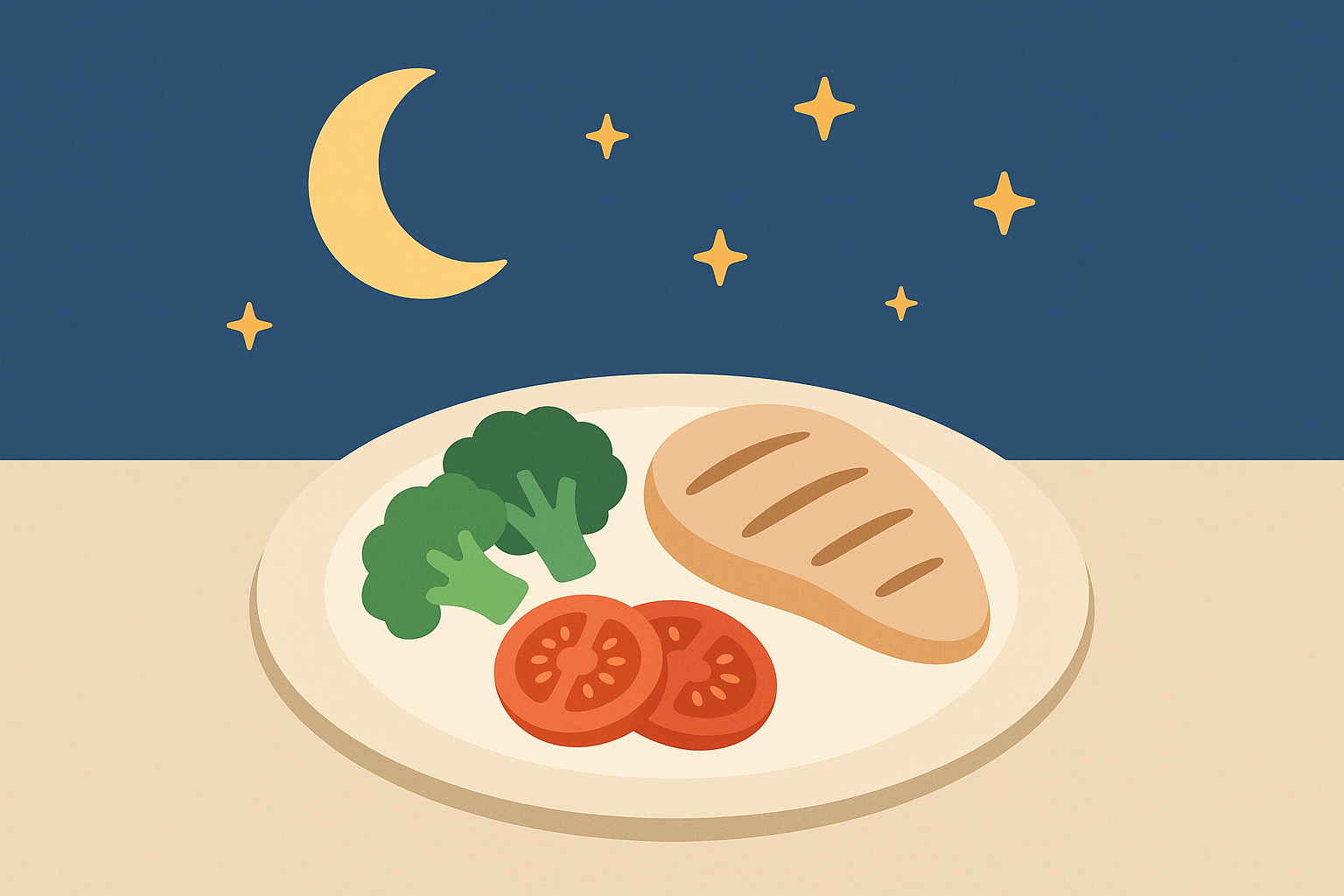
The Overnight Break Your Body Needs
I learned to structure my eating so I naturally get a 14-hour overnight break without even trying. This isn’t about jumping on the intermittent fasting bandwagon – it’s about giving your cells time to do repair work that improves insulin sensitivity.
When you stop eating by 7 PM and don’t eat again until 9 AM, your body gets to do maintenance that’s impossible when it’s constantly processing food. According to Whole Health Partners, most people benefit from eating within a 10-12 hour window, which naturally creates this helpful fasting period.
Flipping Everything: Making Breakfast Your Biggest Meal
This goes against everything we’ve been taught, but the research is clear – making breakfast your largest meal and dinner your smallest actually makes sense for how your body works. I started eating what used to be my dinner portions at breakfast and having lighter, earlier dinners.
The change in my afternoon energy crashes was dramatic, and weirdly, my morning hunger actually improved (which seemed backwards at first). Now I actually look forward to breakfast instead of dreading the thought of eating early.
The Micronutrient Revolution That Changes Everything
While everyone obsesses over carbs, protein, and fat, I discovered that specific vitamins and minerals directly control how well insulin works and how your body handles glucose. These aren’t just “nice to have” nutrients – they’re the difference between a diabetic diet that manages prediabetes and one that actually helps reverse it.
The problem is that most diabetic diet plans completely ignore these, focusing on what to avoid rather than what to actively include. I spent years restricting foods without understanding what I should be adding to actually support my metabolism.

The Minerals Your Doctor Probably Never Mentioned
Chromium and vanadium sound like something from chemistry class, but they’re actually natural insulin helpers hiding in everyday foods. These minerals help your cells respond better to insulin and can even act like insulin in your body.
The catch? Most people with prediabetes don’t get enough of either, and most meal plans never address this gap. Understanding how to improve digestion is important here because you need good digestion to actually absorb these minerals.
Getting Chromium From Real Food
I found that broccoli, grape juice, and whole grains are loaded with chromium, but timing matters. I started including these foods strategically throughout my week – broccoli with higher-carb meals, a small glass of grape juice after workouts, and whole grain toast during my morning window when my body can handle carbs better.
The key is consistency rather than huge amounts. You don’t need to eat pounds of broccoli; you need to include chromium sources regularly with meals that need extra glucose control.
Vanadium: The Insulin Helper Hiding in Your Kitchen
Shellfish, mushrooms, and dill provide vanadium that actually mimics what insulin does when you eat it with carb-containing meals. I started adding mushrooms to pasta dishes, using dill in salad dressings, and having shrimp with rice.
It’s not about eating these foods by themselves – it’s about pairing them strategically with meals that need extra glucose help. When I make a quinoa bowl, I add sautéed mushrooms (vanadium) and steamed broccoli (chromium) to naturally boost the meal’s blood sugar benefits without taking any supplements.
The Magnesium Problem That’s Sabotaging Your Progress
Here’s something that really surprised me – magnesium deficiency directly relates to insulin resistance, yet most people with prediabetes don’t get enough. We’re not talking about a small nutrient gap here.
Low magnesium creates a nasty cycle where your glucose control gets worse, which increases stress, which uses up more magnesium. Breaking this cycle is crucial for any meal plan to actually work.
Getting Your Daily Magnesium From Real Food
I aim for 400-420mg of magnesium daily through dark leafy greens, nuts, and seeds rather than relying on supplements that often don’t absorb well. A large spinach salad, a handful of almonds, and some pumpkin seeds can get you most of the way there.
The trick is spreading it throughout the day since your body can only absorb so much at once. I learned this the hard way after taking a large magnesium supplement and spending an uncomfortable evening dealing with digestive issues that I won’t describe in detail.
Daily Magnesium Food Sources:
- ☐ 2 cups spinach (157mg)
- ☐ 1 oz almonds (80mg)
- ☐ 1 oz pumpkin seeds (150mg)
- ☐ 1 medium avocado (58mg)
- ☐ 3 oz salmon (26mg)
- Total: 471mg (covers daily needs)
Making Sure Your Body Actually Uses the Magnesium
Getting magnesium into your diet is only half the battle – your body needs to actually absorb it. I learned to pair magnesium-rich foods with vitamin D sources (fatty fish, egg yolks) and avoid calcium-heavy meals at the same time since calcium interferes with absorption.
That means not having my spinach salad with a big glass of milk. Timing these nutrients properly made a noticeable difference in how I felt, especially with sleep quality and muscle tension.
Breaking the Stress-Magnesium Cycle
Chronic stress literally drains magnesium from your body, creating a cycle where poor glucose control increases stress, which depletes more magnesium, which worsens glucose control. I had to address both sides – increasing magnesium-rich foods while also managing stress through sleep, movement, and trying to chill out more.
This was probably the hardest part because stress management isn’t as straightforward as eating more spinach. But addressing both nutrition and stress together created results that neither approach achieved alone.

Plant Compounds That Work Like Medicine
Specific plant compounds don’t just provide antioxidant benefits – they directly improve how your muscle cells take up glucose and reduce how much glucose your liver produces. These compounds are so effective that they can turn an ordinary meal into something that really helps keep your blood sugar steady.
The key is knowing which ones to focus on and how to include them consistently. I used to think all antioxidants were the same, but some have very specific effects on glucose metabolism.
The Purple and Blue Food Strategy
I started including foods with anthocyanins – blueberries, purple cabbage, or black beans – with each meal to improve my post-meal glucose response. These deep purple and blue compounds literally help move glucose into your muscle cells where it belongs instead of letting it hang around in your bloodstream.
Even a small handful of blueberries or a few forkfuls of purple cabbage can make a difference. The Dietary Guidelines for Americans recommends that whole grains should make up at least 50% of your carb intake, and combining these with purple and blue foods makes their glucose-controlling benefits even better.
How Your Gut Bacteria Secretly Run Your Glucose Levels
Your gut bacteria aren’t just along for the ride – they’re actively controlling your glucose metabolism through compounds they produce. Some bacteria create substances that improve insulin sensitivity, while others produce inflammatory compounds that make it worse.
A truly effective 7-day meal plan has to specifically feed the good bacteria while starving the harmful ones. This isn’t about general gut health – it’s about targeted bacterial management for glucose control. The connection between drinking vinegars and gut health becomes particularly relevant when managing blood sugar, as these fermented beverages can support beneficial bacteria while improving glucose metabolism.
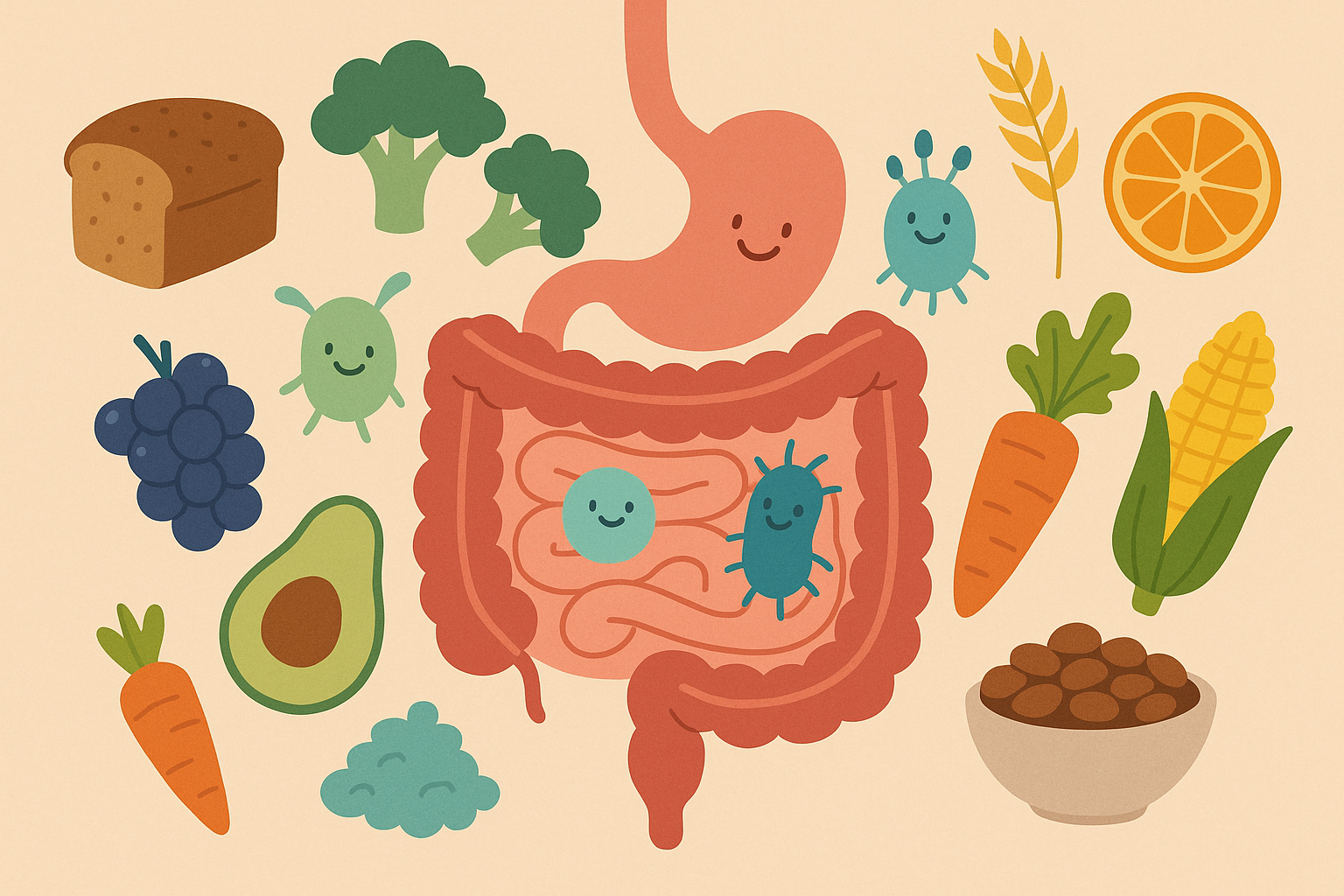
Resistant Starch: The Game-Changer for Good Bacteria
Resistant starch is like rocket fuel for the bacteria that produce butyrate, a compound that directly improves insulin sensitivity and reduces inflammation. The amazing thing is that you can create resistant starch from regular foods using simple cooking techniques.
This isn’t about adding weird ingredients to your diet – it’s about preparing familiar foods in a way that transforms their effect on your metabolism. I was skeptical at first because it seemed too simple to make such a big difference.
The Cooling Trick That Changes Everything
When you cook potatoes, rice, or pasta and then cool them overnight, you increase their resistant starch content by 300-400%. I started batch-cooking these foods on Sunday, letting them cool completely, then reheating portions throughout the week.
Cold potato salad, leftover rice in stir-fries, and pasta salads became staples because they were feeding my beneficial bacteria while satisfying my carb cravings. The texture changes slightly, but the metabolic benefits made it worth the adjustment.
| Food | Fresh Resistant Starch | After Cooling Overnight | Glucose Impact |
|---|---|---|---|
| Cooked Rice | 0.7g per cup | 2.8g per cup | 25% lower spike |
| Boiled Potato | 0.6g per medium | 2.4g per medium | 30% lower spike |
| Cooked Pasta | 1.1g per cup | 4.4g per cup | 20% lower spike |
| Sweet Potato | 1.8g per medium | 7.2g per medium | 35% lower spike |
Green Banana Flour: My Secret Weapon
Green banana flour is basically pure resistant starch that you can use as a flour substitute in baking or smoothies. I started replacing about 25% of regular flour with green banana flour in muffins and pancakes.
It doesn’t change the taste much, but it dramatically increases the resistant starch content while keeping familiar textures that make meals enjoyable. My kids never noticed the switch, which was a huge win for family meal planning.
The Fiber Strategy That Actually Controls Blood Sugar
The order and type of fiber you eat can dramatically change your post-meal glucose spikes, even when eating identical foods. This isn’t about eating more fiber – it’s about eating the right types at the right times to create a glucose-controlling effect that lasts throughout your meal and beyond.
Creating a Glucose-Slowing Effect in Your Stomach
I discovered that eating viscous fiber like psyllium husk or chia seeds 15 minutes before meals creates a gel-like substance in your digestive tract that physically slows glucose absorption. I mix a teaspoon of psyllium husk in water before larger meals, or add chia seeds to a pre-meal smoothie.
It’s not glamorous, but the effect on post-meal blood sugar is remarkable. Before eating pasta (even the cooled, resistant starch version), I drink a glass of water with 1 teaspoon of psyllium husk mixed in. This simple step reduces my post-meal glucose spike from 160 mg/dL to around 125 mg/dL.
Keeping Your Gut Bacteria Happy and Diverse
Including varied fiber sources throughout the week maintains the microbiome diversity that’s essential for glucose regulation. I rotate between different vegetables, fruits, and whole grains rather than eating the same fiber sources every day.
Monday might be Brussels sprouts, Tuesday artichokes, Wednesday apples with skin – the variety keeps different bacterial populations thriving. Each type of fiber feeds different bacterial strains, and you need that diversity for optimal glucose metabolism.
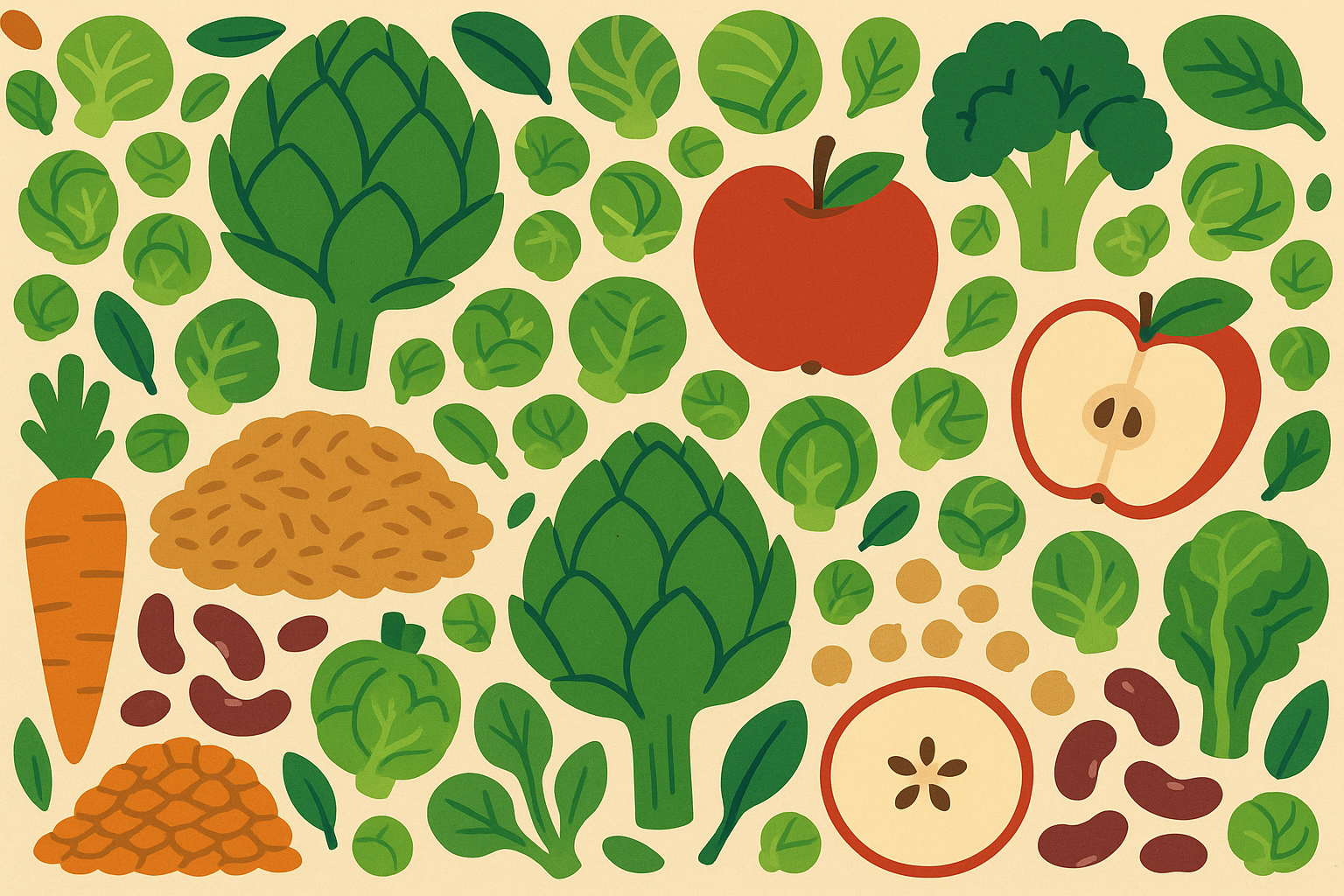
The Food Combining Tricks That Cut Blood Sugar Spikes by 40%
The sequence and combination of foods within meals can reduce glucose spikes by up to 40%, regardless of what you’re actually eating. This means you can transform any meal into a glucose-friendly option without eliminating foods you enjoy.
It’s not about restriction – it’s about strategic timing and pairing that works with your body’s digestive processes. I wish I had learned these techniques years ago instead of trying to white-knuckle my way through restrictive diets that made me miserable.
The Vinegar Thing That Actually Works
Starting meals with diluted apple cider vinegar activates mechanisms that slow how fast food leaves your stomach and improve glucose uptake by your muscles. This isn’t folk medicine – it’s backed by solid research showing real improvements in post-meal glucose levels.
The key is timing and consistency rather than massive amounts. I used to think more was better and would gulp down straight vinegar, which was both unpleasant and completely unnecessary.
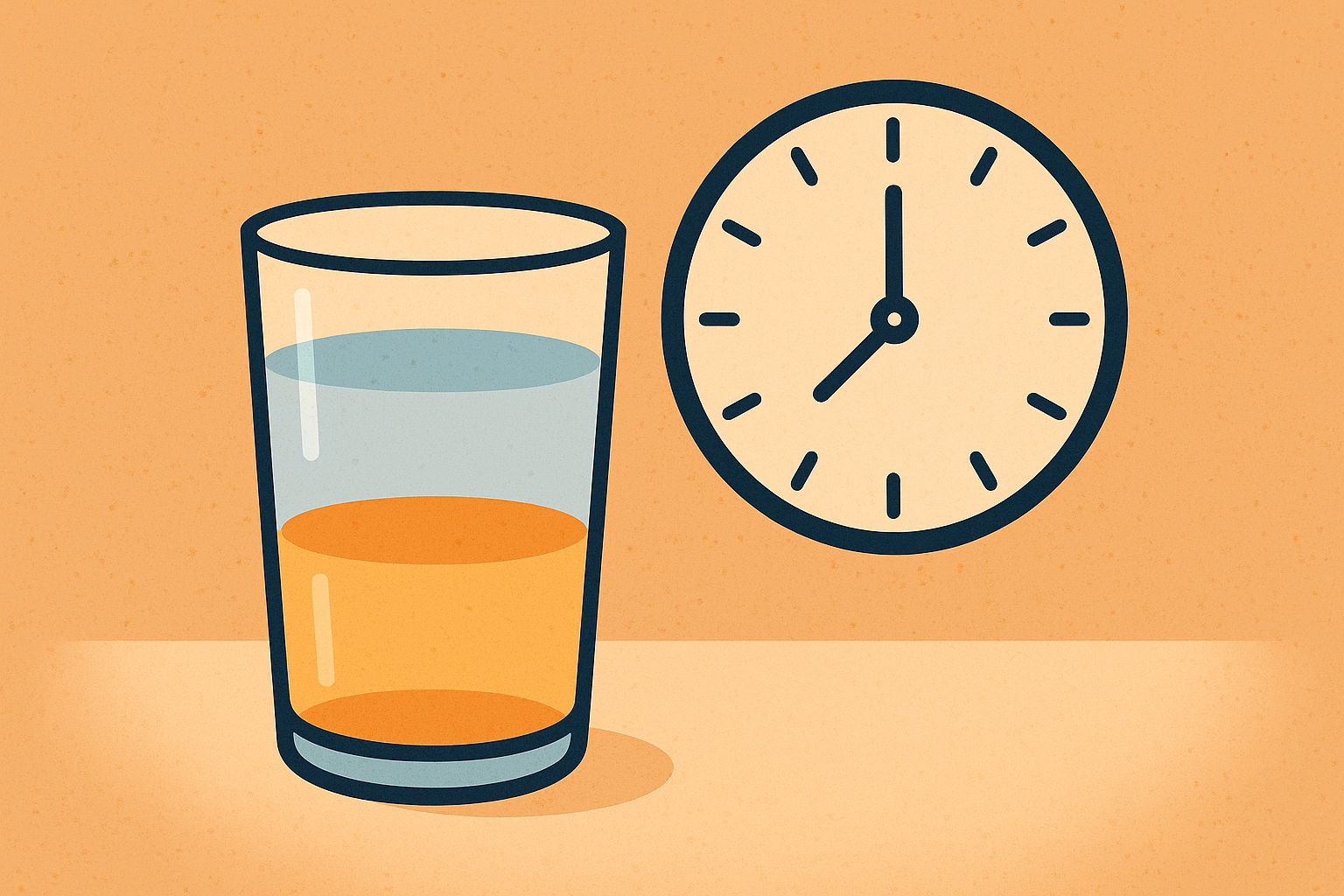
Getting the Timing and Amount Right
I drink 1 tablespoon of apple cider vinegar in 8 ounces of water 10-15 minutes before carbohydrate-containing meals. The timing matters because you want the vinegar to reach your stomach before the food arrives.
I set a phone reminder for 15 minutes before planned meals to make this automatic. According to Season Health, weight loss of 5-10% of your body weight can significantly lower A1C and help prevent or delay type 2 diabetes, and the vinegar protocol supports this by improving post-meal glucose control.
When Vinegar Isn’t Practical
Lemon juice, pickle juice, or fermented vegetables can provide similar glucose-blunting effects when vinegar isn’t practical. I keep lemon wedges handy for restaurant meals, snack on pickles before pizza, or start meals with sauerkraut or kimchi.
The acid content is what matters, not the specific source. Restaurant servers might give you strange looks when you ask for lemon water before your meal arrives, but your blood sugar will thank you. Yes, I’m that person now.
Pre-Meal Acid Options:
- ☐ 1 tbsp apple cider vinegar in water (my go-to)
- ☐ Juice of 1/2 lemon in water
- ☐ 2 tbsp pickle juice
- ☐ 1/4 cup fermented vegetables
- ☐ 1 tbsp lemon juice over salad
The Protein-First Eating Order That Changes Everything
Eating protein before carbohydrates triggers hormones that slow digestion and improve insulin response. This simple change in eating order can dramatically reduce glucose spikes without changing what you eat.
It’s about working with your body’s natural hormone responses rather than fighting against them. Understanding Dr. Mark Hyman’s breakfast principles can provide additional insight into optimal meal sequencing for metabolic health.
The 10-Minute Rule That Feels Weird But Works
I eat my protein source first, wait 10 minutes, then eat carbohydrates to maximize the glucose-lowering effect. This might mean eating the chicken from my chicken and rice bowl first, waiting a bit, then eating the rice.
It feels weird at first, and my family definitely thought I was being overly complicated until they saw how much more energy I had in the afternoons. Now they’re used to me eating in a strange order, and some of them have started doing it too.
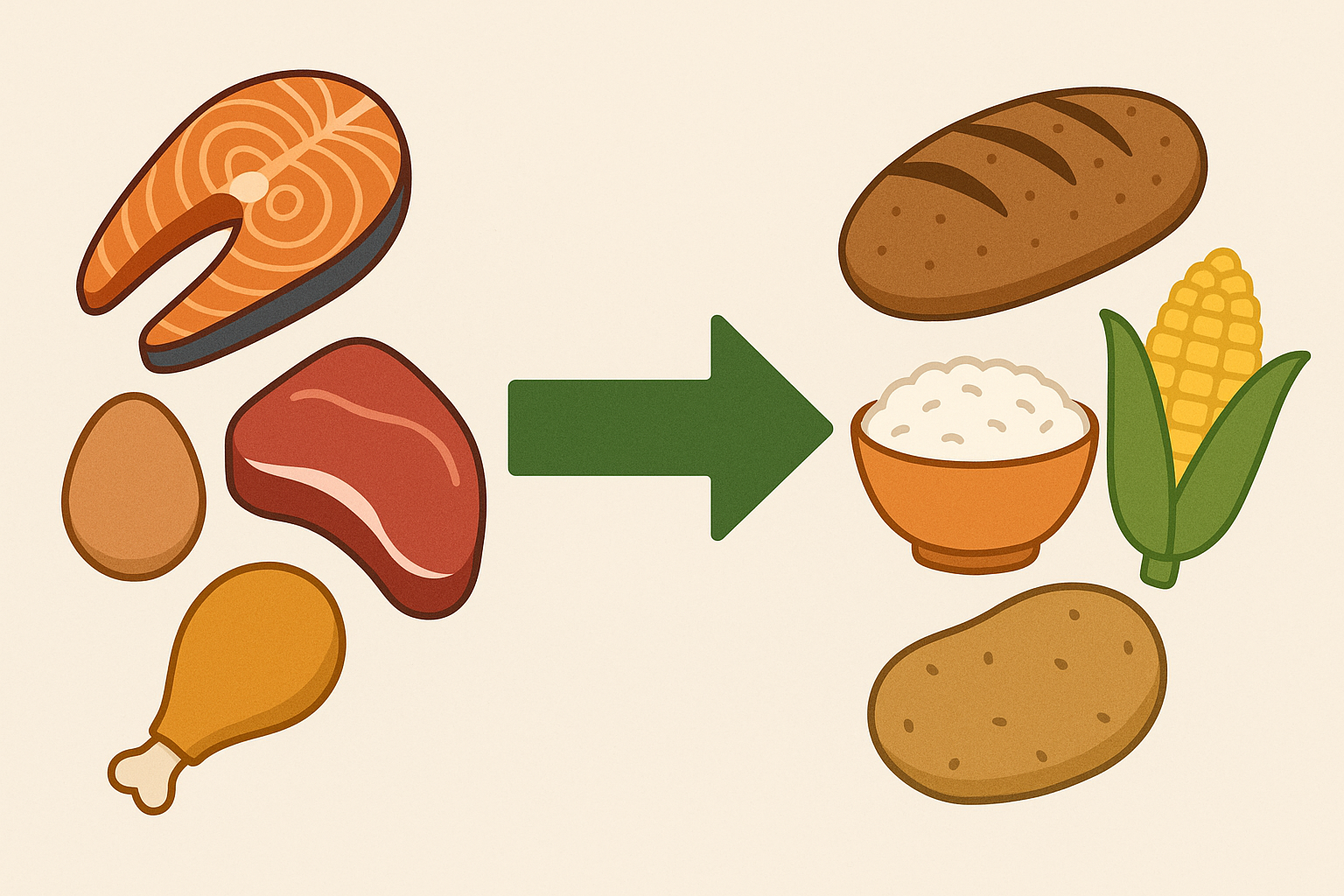
Final Thoughts
Creating an effective 7-day meal plan for prediabetes isn’t about following another restrictive diet – it’s about understanding and working with your body’s natural rhythms and processes. The strategies I’ve shared here represent a real shift from just managing prediabetes to actually helping reverse it through targeted nutrition approaches.
What I love most about this approach is that it’s actually sustainable. You’re not eliminating entire food groups or counting every calorie. Instead, you’re making strategic choices about timing, sequencing, and food combinations that change how your body responds to meals.
I know this sounds like a lot – trust me, I felt overwhelmed at first too. You don’t have to do everything at once (I tried that and it was a disaster). Pick one thing that seems doable and start there. Maybe it’s the morning protein timing, or the vinegar before meals, or just trying to eat dinner earlier. Small changes really do add up over time.
The morning protein timing, evening eating windows, resistant starch creation, and food sequencing strategies can all be implemented gradually and adjusted to fit your lifestyle. At Organic Authority, we understand that true wellness comes from evidence-based approaches that honor your body’s natural intelligence. Our carefully curated selection of high-quality greens powders and organic foods can support your journey toward better metabolic health.
Remember, reversing prediabetes is a process, not a destination. Be patient with yourself as you try these strategies, and don’t expect perfection. Some days life happens, and that’s completely normal. Progress isn’t always linear – there will be good weeks and not-so-good weeks.
Your body will thank you for working with its natural wisdom rather than against it. The science is clear, the tools are available, and the results speak for themselves when you give your metabolism what it actually needs to thrive. It’s not magic, but for me, it made a real difference – and I hope it can help you too.

